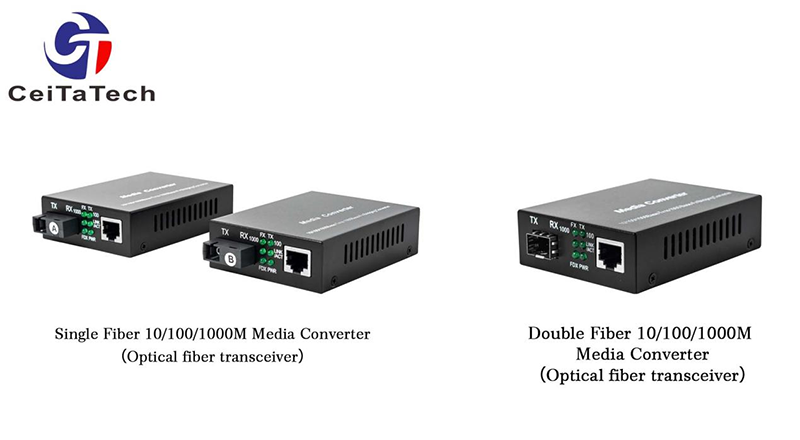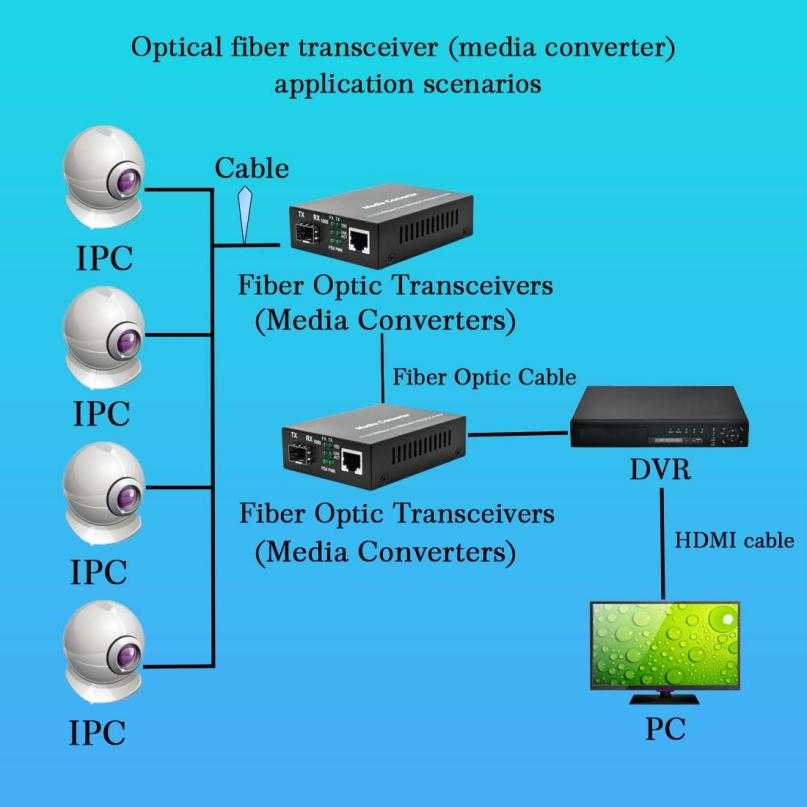一、 Basic concepts and types of optical fiber transceivers (media converters)
An optical fiber transceiver is a device that converts Ethernet electrical signals into optical signals, or converts optical signals into electrical signals. It is widely used in long-distance, high-bandwidth data transmission, especially in fiber optic networks. There are two main types of fiber optic transceivers: single-mode fiber optic transceivers and multi-mode fiber optic transceivers. Single-mode optical fiber transceivers use a single optical fiber for transmission and are suitable for long-distance transmission; while multi-mode optical fiber transceivers use multiple optical fibers for transmission and are suitable for short-distance or intra-LAN transmission.
二 The working principle and key technologies of optical fiber transceivers (media converters)
The working principle of fiber optic transceivers is based on photoelectric conversion technology. Specifically, when an electrical signal enters the input of a fiber optic transceiver, it is converted into an optical signal and then transmitted through the optical fiber. At the receiving end, the optical signal is received by the photosensitive element, converted into an electrical signal, and finally output. The key technologies involved in this process include laser emission technology, optical signal modulation and demodulation technology, and photoelectric conversion technology.

三、Application scenarios and advantages of optical fiber transceivers (media converters) in data communications
Optical fiber transceivers are widely used in various data communication scenarios, such as data centers, cloud computing, Internet of Things, security monitoring, etc. Its main advantages include: high bandwidth, long-distance transmission, low latency, high stability and good anti-interference ability. These advantages make fiber optic transceivers ideal for long-distance, high-speed data transmission.

四、The applicability of different types of optical fiber transceivers (media converters) to different scenarios
Different types of fiber optic transceivers are suitable for different scenarios. For example, single-mode optical fiber transceivers are suitable for ultra-long-distance, high-bandwidth transmission, such as transoceanic optical cables, long-distance communications, etc.; while multi-mode optical fiber transceivers are suitable for short-distance, high-density application scenarios, such as data centers, clouds, etc. Computing facilities, etc. In addition, there are some special optical fiber transceivers, such as transceivers with hot-swappable functions, which are suitable for scenarios that require high reliability and uninterrupted service.
五、How to work together between fiber optic transceivers (media converters) and network equipment
Fiber optic transceivers play a key role in network architecture, enabling fast and stable data transmission between network devices. Fiber optic transceivers are usually used in conjunction with network equipment such as switches and routers to achieve seamless transmission of data. At the same time, fiber optic transceivers can also provide network isolation, signal amplification and other functions to further enhance the stability and reliability of the network.
Post time: Jan-10-2024








